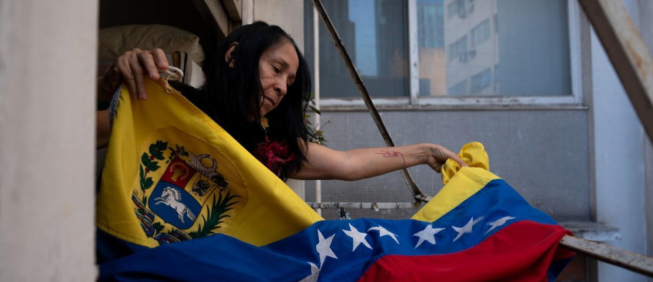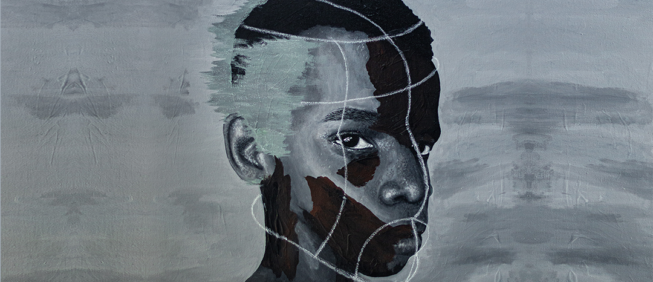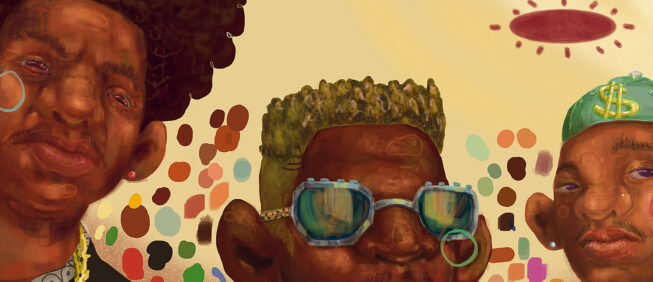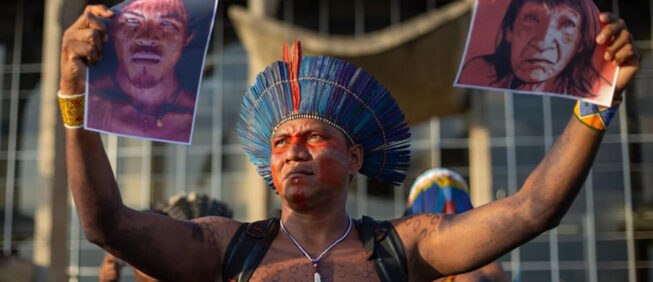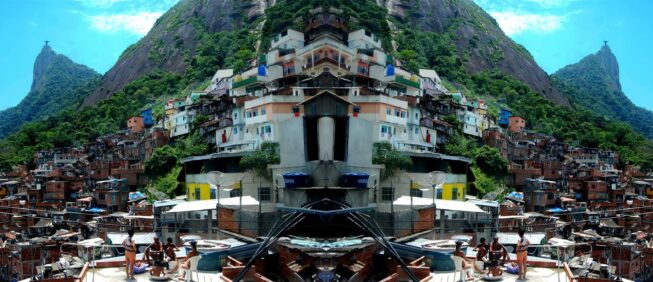The Paradigm of Potency and the Pedagogy of Coexistence
Fernando Fernandes, Jailson de Souza e Silva and Jorge Barbosa
Instituto Maria e João Aleixo (IMJA) | UNIperiferias
| Brazil |
19 de May de 2018
translated by Edmund Ruge
At present, hate and social indifference dominate public debate, political rhetoric and media narratives. They gain momentum in the disrespect generated by ethnic, moral and religious discourse — one that emphasizes opposition to the other, to the different. In this regressive social scenario, there has arisen a paradigm that threatens democracy and tolerance for difference.
Allied to this process, sectarianism, in its various forms, pervades various ideological agendas — present equally among the extreme left and extreme right — intensifying political and symbolic tensions.
Such elements comprise the current structure, one that produces, supports, and disseminates discourses that serve to legitimize the dehumanization of whole social groups, intensifying the discarding of those marked as different or antagonistic.
For this discursive plan, which spreads in an alarming and devastating way in its sociability, favelas, peripheries, slums, occupations and other living arrangements share stereotypical symbolic representations in the urban scenario, typically associated with negative and prejudiced labels. Finally, such discourse reinforces social and physical characteristics inferior to normative patterns defined by hegemonic aesthetic regimes and conservative models of urban habitation.
Following the contributions of Pierre Bourdieu, and considering the urban space a field in which the symbolic capital of territoriality and its inhabitants aggregate economic and social status, we understand the accumulation of symbolic capital in the city as central to the accumulation of economic and social capital.
Therefore, in our first edition of Peripheries Journal, we argue that the improvement of means and conditions of existence in popular territories in large part depends upon changes in symbolic markers.
These are changes that do not, however, ingrain themselves with the incorporation of the dominant conceptions of aesthetics and habitation. Rather, they involve a recognition of the inventive capacity — the result of strategies and affirmation of interaction in the urban space —possessed by the populations of unequal territories.
On the Origin of the Paradigm of Absence
It is generally accepted that urban occupations with limited access to infrastructure and public services, and with profiles of low social status (in detriment to low education levels, high levels of unemployment, precarious work situations, poor health indicators and so on), be classified as “devoid,” “unfavorable,” “underprivileged,” “pauperized” and “destitute.”
These descriptors contribute to the formation of a doxa urbana, in which symbolic denigration, beginning with the discourse elaborated and disseminated by mass media, becomes common sense. The same process occurs in distorted narratives (informal conversations, jokes), such that public policies reproduce a conforming to said discourse.
The act of considering that popular territories do not satisfy desired life patterns is fundamental for sustaining claims for State investment capable of guaranteeing better life patterns and legally enabling their full use. This discussion finds itself at the center of urban and housing policy reformulation: claims legitimate themselves via the production of knowledge, public opinion and official data, which jointly demonstrate the scarcity of resources and means for obtaining decent living conditions.
Recognizing such characteristics of inequality is a fundamental act for achieving decent life patterns. However, it is also troubling that emphasis falls exclusively on the element of absence and what these territories are not, or when relevant factors are omitted, ignored or mitigated.
The paradigm of absence does not recognize the strategies of authentic forms of “resilience.” Nor does it allow for life styles and forms considered to be legitimized by hegemonic social, cultural, political, and aesthetic references. These are, fundamentally, social habitus developed under specific life conditions, symbolically denigrated as an integral part of the process of bodily-territorial distinction, recurring in the urban space.
The process of symbolic denigration is part of an even broader dynamic involving a narrative production that seeks popular adhesion as well as to justify State action, which benefits specific sectors of society to the detriment of others.
Such practices are conducted by economic and political elites. They make use of symbolic violence to maintain the status quo. Exercised under the guise of “democratic practices,” urban interventions are presented as beneficial for a broader portion of society, who will benefit from the productions of capital accumulation of the elite.
The “Pedagogies of Monsterization”
The “pedagogies of monsterization” operate expanded mechanisms of inculcation that also conform the social habitus to the urban space. We learn to hate, to be indifferent, and to ignore the other, sustaining stigmatizing and denigrating attitudes in incorporating the narrative of social aversion (Taylor, 2011), of dismissal (Giroux, 2010), and of negation, (Bauman, 2009). United, they configure processes of non-civilization (Rodger, 2013) of those groups treated as marginalized.
These “pedagogies of monsterization” are at the core of the processes of negation of the other, the different. They generate and reproduce social tensions whose impact is deeply perverse for coexistence in the city, and, annihilate all traces of humanity by making use of diffuse and dispersed narratives to gradually produce truth or “regimes of truth” (Foucault, 1976). Not only do they engender mindsets and forms of comprehension (in this case, related to the other), but also juxtapose a hierarchical value system in which two processes occur in parallel.
The first is the “self-realizing prophecy”: predictable behaviors, used as stigmatizing labels, reinforce the situations and characteristics in which social aversion, disapproval and hate, are formed. Put simply, by basing themselves in predictable behavior, systems are established to ensure people fail.
The second, the process of symbolic destruction, can be so strong that whatever attempt to produce counter-narratives will confront resistance based in “filters” determined by inculcated social representations. These representations deem and normalize as inferior any arguments contrary to dominant explanations.
In other words, the voice of stigmatized groups is limited to the ears of their supporters. These voices confront strong resistance to sensitization from those carrying some from of pre-judgement.
In synthesis, strategies of social and racial distinction operate to reinforce hierarchies of humanity and oppression through the use of symbolic violence, based in pedagogical processes that normalize indifference, social aversion and hate — constitutive elements of the social contradictions reproduced in the urban space. Public humiliation and dehumanization of specific groups results from such pedagogies.
Territorial Stigma and Narratives of the Origin of the Representation of the Favela
The spatial dynamic of concentration and stigmatization is considered, including by the sociologist Loïc Wacquant (1999; 2008), as one of the structural components of “advanced marginality.” For territorial stigmatization, Wacquant considers the tendency to “conglomerate and coalesce around ‘complex’ and ‘surrounded’ areas which the residents themselves consider, no less than those from outside, 'urban hellholes' characterized by absence, immorality, and violence; where only those excluded by society would consider living” (Wacquant, 1999: 1643-44). He is also emphatic about the lessening of the sensation of community facing the sphere of privatized consumption and the strategies of distancing (“I’m not one of them”); such strategies of distancing weaken local solidarity and confirm denigrating perceptions of territory.
We agree that stigmatization obscures “functional and structural differences underlying unequal spatial distribution of poverty and disadvantage, just as it unbinds questions of state and private sector responsibility” (Hancock and Mooney, 2013: 53).
We also agree that social representations sustained by stigmatization exercise an expressive role to favor politics and practices oriented towards the maintenance of control of power structures and decision-making (Hall et al. 2013; Wacquant, 2010; Tyler, 2013), that, in conformity with the neoliberal agenda, has been attacked by market interests, removing from the State and civil society the means for reaching socially just deliberations (Giroux, 2011).
The symbolic denigration of socially unequal groups reinforces the disparity in power and weakness of democracy in the city, and, as a consequence, the right to the city.
In Brazil, and more specifically in the city of Rio de Janeiro, social representations of the favelas and other popular territories were fundamental in keeping them deprived of representation in urban development and public policy. The demoralization of favela residents, treated as “second class citizens” (or “non-citizens”), together with other labels, were historically utilized to retain, in the territory of the favelas, the residents in conditions of inequality.
The act of circumscribing favelas as isolated entities for the production of urban space has also been used ideologically to expose them as not belonging to the city, as problematic areas whose only viable solution is physical elimination, as per the idea of “urban cancer” (Fernandes 2005). Though the idea of elimination (“removal”) continues on, emphasis has been given to the need to symbolically (though where possible, physically) eliminate the social product of the favelas: the favelado.1those who live in the favelas; favela residents
The recognition (legal, or by public policies) that the favela is an integral part of urban life can not completely avoid the old discourse of “removal." It has unleashed, rather, new social processes whose symbolic attacks on favela territory and its people, have worsened. The criminalization of favela residents — and the pathological reference to criminal behavior — serve as a nucleus for this symbolic attack. It is not without motive that the emergence of armed civil groups in favelas and the militarized response of the State has been the subject of wide-reaching debates in the field of urban security associated with human rights.
On the other side, the creation of grassroots movements treating housing, education and culture as rights has generated new tensions, contesting stigmatizing labels and reaffirming the importance of groups, collectives and social subjects for political and symbolic disputes in the city.
The processes described by Wacquant are principally analyzed in developed countries — especially France and the United States, and in the respective territories formed by the state (ghettos in the US and the French banlieue — described as “political creatures of the state” (Wacquant; 1999). However, we see limits in this conceptual structure. The historical and conjunctural differences, alongside the specific shape neoliberalism takes in each area, are clear. Concepts such as “social stigma” and “objectification” and the homogenization of territory and of its residents dismisses the “inventive power” of the collective subjects born of spaces marked by inequality.
It is necessary, furthermore, to critically address the reverberations of the “territorial stigma,” a relevant reference vis-a-vis ideological processes, which, in labeling neighborhoods, contributes to discriminating against them more broadly. When decontextualized and taken objectively, such concepts do not consider certain social processes through which stigmatized groups, such as the favelas, formed themselves.
In fact, favelas and peripheries are essentially spaces of multiple existences. They hold strong and positive images for social movements as well as their own residents.
The issue is that when there exists an emphasis on “absence” and “immorality” in such territories, we ignore the forces that take shape, not only as new configurations of social activism, but also and more importantly, in the practices of those symbolically deprived of social, cultural and political representation.
If the symbolic status of favelas and other territories marked by inequality share a social representation sustained by ideas of “deprivation” and “deficiency” (Silva, 2000), their narrative of origin orients other representations that have accompanied the idea of absence in a broader sense. There exist multiple examples, such as the various political interventions and charity projects that consider assuming “citizenship” of territories where citizenship does not exist (or there exists only "second class citizenship”). Another example lies in the lack of adequate living conditions when compared with neighborhoods considered “normal” (Silva e Barbosa, 2005; Silva et al. 2009). As such, its representations are often depicted as “subnormal,” as the IBGE census maintains (2010). The “subnormality” is thus contested, first, for focusing on normative patterns, questionable in terms of class perspective; and second, for ignoring characteristics of strength in the territories in favor of certain policies guided by class norms, despite the clear existence of inventive capacity (Silva et al. 2009b).
Such situations result in a high level of complexity when they take the form of urban violence and its associated side-effects: prejudice, discrimination, stigmatization and indifference -- originating in and radically aggravated by racialized power relations.
This explains why it is preferable to refer to these territories (and to their subjects) as dissonant to the dominant pattern. They suffer from an historical process of symbolic annihilation that robs them of the production of the urban or of the city. They are considered isolated entities, just as in the “urban cancer” representation produced in the early 20th century. Beyond this, the lack of recognition of the positive forces of the favelas and peripheries has historically mitigated the possibility of considering an urbanization project that treats the favelas and the periphery as points of departure rather than objects for “arbitrary” (and supposedly democratic) interventions that ignore the potential of these territories.
The historical process of symbolic annihilation of the favelas may, therefore, be considered a violent form of “organized forgetting” (Giroux, 2014), in which the status of the citizenship of the favela resident is abbreviated in conflict with “ignorance,” “illiteracy” and other generalizations used as symbolic forces to manipular, exploit and silence.
The Paradigm of Potency
In contrast to the facile classifications of these territories as”deprived,” “unfavorable,” “unprivileged,” “pauperized,” or “needy,” the Paradigm of Potency2 Translator's Note: We use "potency" rather than "power" to avoid associations with the sociological concept of power as well as to signify the inventive and influential capacity of the peripheries and their subjects in the city. stands in opposition to the paradigm of absence. “The inventive power” of the peripheries, rendered as potential, is their capacity to generate practical and legitimate responses, forming counter-hegemonic life forms for society.
A recognition of the inventive power of groups marked by social inequality and stigmatized by violence -- and more broadly, of the urban peripheries -- must be used as a reference for the construction of the “Paradigm of Potency.” It is through this mechanism that life style (rather than life conditions) may be recognized by those groups' own terms (rather than compared to the hegemonic forms present in the city).
In other words, the popular territories and their subjects must be valued for the inventivity that they contribute to urban life, rather than denigrated as expressions of absence or deprivation. These negative representations, among others, operate as symbolic forces in the public sphere to devalue existences, reputations and demands for rights for these territories.
As a first step in sustaining the proposed paradigm of potency, we understand as fundamental the development of permanent forms of coexistence that allow us to learn to share the city. In this way we challenge the processes of non-recognition of the other, used to create urban monsters. We recognize the mix of practices, aesthetics and strategies originating in the Periphery as being a form of answer, authentic and unquestionably legitimate, to urban inequality. These are answers in response to life hegemonies that, however, are ignored or subjected to limited understanding when one proposes conceptual discussion on what the territories (and their inhabitants) are or are not in terms of what is seen as normal, legal and formal in the reigning production of contemporary urban space.
We consider it a necessity to affirm voices and favor spheres of participation in order to ensure democracy's expansion in the city. We also consider it necessary to incorporate symbolic dimensions continually ignored by hegemonic parameters, such that policies, practices and the exercise of rights to the city are defined.
It is thus that the Paradigm of Potency illustrates the inventive power of the peripheries: this power is manifested in innovative strategies of existence and creative solutions for conflict resolution, as in cultural production, the accumulation of aesthetic repertoires and in work modes centered in plural existences.
For a “Pedagogy of Coexistence” in the City
The limits for coexistence in the city are diverse and complex, and it will take time for structural changes to establish a new social habitus and code for living. Tensions may also go unresolved, but may be led from another level of sociability.
The challenge is, therefore, to promote a culture of coexistence in which differences and conflicts are recognized as fundamental dimensions for human interaction. We can advocate for the development of a culture in terms of a pedagogy of coexistence, capable of creating a mode through which we interact, promote change, and above all, exercise the experience of living in the city.
The proposed pedagogy should consist of an apprenticeship of life, inserted into the urban experience. Experiencing the city in all its dimensions should be given.
The “pedagogy of coexistence” aligns with “critical pedagogy,” as proposed by Giroux (2012), referring to educational practices that create conditions for the production of critical, self-reflecting, conscientious citizens, prepared to act in socially responsible ways -- an element central to the survival of democracy. Advancing in the same direction, a “pedagogy of coexistence” must include existential practices and practices of life in the city, such that conditions are created for the production of citizens ready to live and experience life in the city in solidarity, fraternity and respect for each other's differences.
Citizens wholly prepared to live in solidarity with the other are capable of engaging in a virtuous process of humanity and love, one that contrasts with the “pedagogy of monsterization,” which concerns itself only with the formation of opinions, values and sentiments, and whose objective is to devastate, eliminate and order differences, rather than embrace them.
Fundamentally, it is necessary to conceive of the city as a space that is central to experiencing life oriented towards coexistence.
This co-existence (a co-living) is only possible through the recognition of the potential, the inventive power of the favelas and of the urban periphery - which urges a (re)consideration of the aesthetic and social habitus produced by these territories as they serve as a basis for narratives produced and reproduced by the “pedagogy of monsterization.”
As previously discussed, the rejection of the favelas' aesthetic and of their forms of socialization has been utilized to exclude such territories and their inhabitants from participation in urban and political debate. However, the parameters and references that mold the urban project must include the inventive power of the favelas and the peripheries. The singular experiences of housing, social experience, cultural creation and the exercise of political agency must be recognized on their own and not contrasted with normative, socio-political and symbolic references, references that form a non-democratic project of the city and of “monsters” (Brazilian funk as non-culture; the favela as sub-normal; blacks as inferior; youth from the periphery as criminals; immigrants as a threat).
Just as humanity is capable of hate, it is also capable of love. The borders between these two acts are predominantly sustained by ideas, words and feelings that are socially constructed. Therefore, a “pedagogy of coexistence” is possible: its mission is to create synergies in the city and to contest all forms of violence against humanity.
This does not mean ignoring inequalities, conflicts and contradictions in the city; nor does it mean ignoring oppression. It is imperative that we discuss the necessity of contemplating with more rigor the processes of socio-symbolic pillaging as an active force in the production of urban space and in the molding of the urban experience.
What are, as a proposal for construction and action, the references and experiences that should guide the production of the city? How can such references be incorporated into a democratic process that recognizes the potency of favelas and the urban peripheries? How can these territories be protagonists in the production of the city rather than mere recipients of socio-political, stigma-reproducing, stereotype-perpetuating, normative references?
Finally, and no less importantly, how do the ideas proposed here find common and diverging points in relation to the questions that affect urban, Brazilian and global peripheries?
We invite you all to participate in this open debate on Peripheries Journal.
Bourdieu, P (1989) Social Space and Symbolic Power. Sociological Theory, 7(1): 14-25.
Bourdieu, P (2006) A Distinção. Crítica social do julgamento. Porto Alegre, Zouk.
Fernandes, F L (2005) Os discursos sobre as favelas e os limites ao direito à cidade. Cidades, Presidente Prudente, Grupo de Estudos Urbanos, 2(3): 37-62.
Fernandes, F L (2008) Um olhar sobre direitos humanos nos territórios populares e o direito à cidade. Boletim Salto para o Futuro. Direitos Humanos e Educação. 8(2).
Fernandes, F L (2009) ‘Violência, medo e estigma: efeitos sócio-espaciais da “atualização” do “mito da marginalidade” no Rio de Janeiro’, unpubl. PhD thesis, Federal University of Rio de Janeiro.
Fernandes, F L (2012). Os jovens da favela. Reflexões sobre controle e contenção sócio-espacial dos párias urbanos no Rio de Janeiro, Convergencia Revista de Ciencias Sociales, 19:52, pp. 159-186.
Fernandes, F L (2013a) Youth Gang Members in Rio de Janeiro: The Face of a “Lost Generation” in an Age of Fear and Mistrust. Bulletin of Latin American Studies, 32 (2):210-223.
Fernandes, F L (2013b) The Brazilian ‘hyperprecariat’ and the socio-symbolical condition of the urban outcasts: on favelas, violence and the ‘lost generation’ in Rio de Janeiro. Criminal Justice Matters, 93 (1):12-13999
Fernandes, F.L. and Rodriguez, A. (2009), Escape Routes: Lessons Learned From the Development of Prevention Methodologies and the Creation of Alternatives for Adolescents and Youngsters Involved in Drug Trafficking, Observatório de Favelas; International Labour Organization, Brasília; Geneva.
Fernandes, F.L. and Rodriguez, A. (2015) The “lost generation” and the challenges in working with marginalised groups. Learnt lessons from Brazilian Favelas. Radical Community Work Journal, 1(1).
Fernandes, F.L., Edmundo, K. and Dacach, S. (2009), Possible Ways. Eight projects for the youth. Rio de Janeiro, Observatório de Favelas; Ministry of Education.
Giroux, H (2010) Youth in a suspect society. Democracy or disposability? New York, Palgrave Macmillan.
Giroux, H (2011) On Critical Pedagogy. New York, Continuum.
Giroux, H (2012) The disposable youth. London: Sage.
Giroux, H (2014) The Violence of Organised Forgetting. Thinking beyond America’s disimagination machine. San Francisco, City Lights.
Hall, S et al. (2013) Representation. London, Sage
Hancock, L and Mooney, G (2013). Beyond the penal state: advanced marginality, social policy and anti-welfarism. In: Squires, P and Lee, J. Criminalisation and Advanced Marginality. Critically Exploring the Work of Loïc Wacquant. Bristol, Policy Press. pp. 107-128.
IBGE (2010) Aglomerados Subnormais. Informações territoriais. Available at: http://biblioteca.ibge.gov.br/pt/biblioteca-catalogo?view=detalhes&id=7552
IBGE (2010) Censo demográfico: 2010: aglomerados subnormais: informações territoriais. IBGE. Available at: http://biblioteca.ibge.gov.br/visualizacao/periodicos/552/cd_2010_agsn_if.pdf
Rodger, J (2008) Criminalising Social POlicy. Anti-social behaviour and welfare in a de-civilising society. Cullompton, William-Publishing.
Rodger, J (2013) Loïc Wacquant and Norbert Elias: advanced marginality and the theory of the de-civilising process. In: Squires, P and Lee, J. Criminalisation and Advanced Marginality. Critically Exploring the Work of Loïc Wacquant. Bristol, Policy Press. pp. 87-106.
Silva, J S (2002) ‘Um espaço em busca de seu lugar: as favelas para além dos estereótipos’ in: Programa de Pós-Graduação em Geografia - UFF, Território. Territórios. Niterói: EdUFF.
Silva, J S (2016) O Direito a convivência pública ou a barbárie. Nexos. Available at: http://of.org.br/wp-content/uploads/2016/04/Artigo-para-a-Nexos-Conviv%C3%AAncia-P%C3%BAblica-ou-a-Barb%C3%A1rie.pdf
Silva, J S and Silva, H (2005) O. Análise da violência contra a criança e o adolescente segundo o ciclo de vida no Brasil. São Paulo/Brasília: Global/UNICEF.
Silva, J S and Urani, A (2002) Children in Drug Traffic: a rapid assessment. Geneva, International Labour Organization; Brazilian Ministry of Labour and Employment.
Silva, J S et al (2009), Escape Routes. A study on adolescents and youths involved in drug trafficking in Rio de Janeiro, Observatório de Favelas; International Labour Organization, Brasília; Geneva.
Silva, J S (2012) Para uma pedagogia da convivência na cidade. In: Silva, J S et al O Novo Carioca. Rio de Janeiro, Morula.
Souza, M L (2009) ‘Social movements in the face of criminal power. The socio-political fragmentation of space and ‘micro-level warlords’ as challenges for emancipative urban struggles’, City, 13, 1: 26-52.
Tyler, I (2013) Revolting Subjects. Social abjections and resistance in neoliberal Britain. Zed Books, London.
Wacquant, L (1999) Urban Marginality in the coming millennium. Urban Studies 36(10): 1639-47
Wacquant, L (2001) Os Condenados da Cidade. Estudos sobre marginalidade avançada. Rio de Janeiro, Revan.
Wacquant, L (2008) Urban Outcasts. A comparative sociology of advanced marginality. Cambridge, Polity.
Wacquant, L (2010) Crafting the neoliberal state. Workfare, prisonfare and social insecurity. Sociological Forum, 25(2): 197-220
